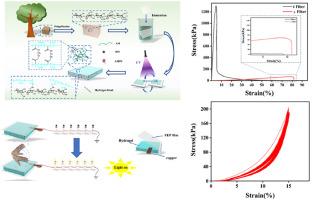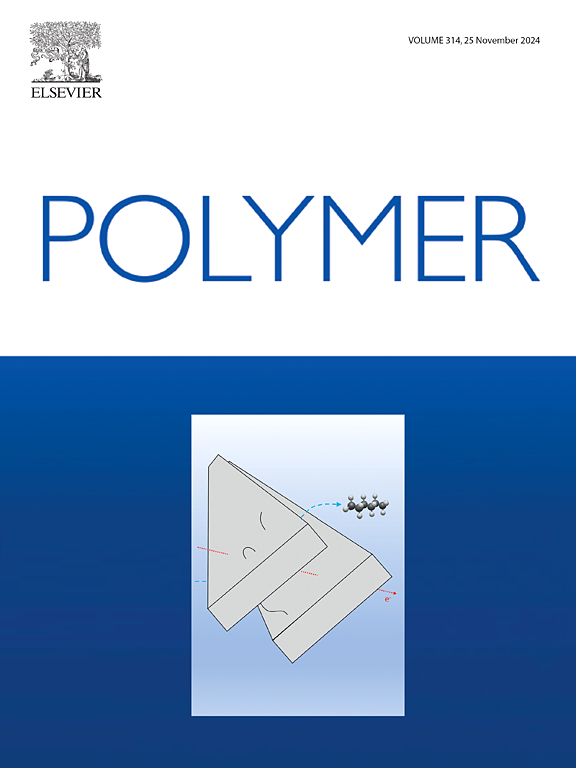AM/AMPS delignified wood-based hydrogel with enhanced mechanical strength and fatigue resistance for wearable strain sensing and energy harvesting
IF 4.1
2区 化学
Q2 POLYMER SCIENCE
引用次数: 0
Abstract
Hydrogels with enhanced mechanical strength and fatigue resistance have attracted considerable attention in the development of advanced triboelectric nanogenerators (TENGs). Flexible electrode is the key to the preparation of TENG. However, the preparation process of traditional flexible electrode is complex, the mechanical strength is poor, and the cost is high. These factors limit its application and development. In this work, a composite material named AM/AMPS wood-based hydrogel (AWH) was reported, which was composed of acrylamide (AM)/2-acrylamido-2-methyl-1-propanesulfonic acid (AMPS) hydrogel and delignification wood. AWH combines the natural fiber structure of wood and the softness of hydrogel, and has excellent mechanical properties and fatigue resistance. AWH is assembled into a triboelectric nanogenerator (AWH-TENG), which has high power generation performance and low cost. The AWH-TENG has an open circuit voltage of 60 V and can light up 113 LED bulbs. At the same time, AWH is sensitive to mechanical stimuli, so we have carried out research on its application in the field of wearable motion monitoring and writing sensing and achieved good results. In addition, the writing sensing system based on AWH-TENG is expected to be combined with deep learning to develop a new handwriting recognition system.


求助全文
约1分钟内获得全文
求助全文
来源期刊

Polymer
化学-高分子科学
CiteScore
7.90
自引率
8.70%
发文量
959
审稿时长
32 days
期刊介绍:
Polymer is an interdisciplinary journal dedicated to publishing innovative and significant advances in Polymer Physics, Chemistry and Technology. We welcome submissions on polymer hybrids, nanocomposites, characterisation and self-assembly. Polymer also publishes work on the technological application of polymers in energy and optoelectronics.
The main scope is covered but not limited to the following core areas:
Polymer Materials
Nanocomposites and hybrid nanomaterials
Polymer blends, films, fibres, networks and porous materials
Physical Characterization
Characterisation, modelling and simulation* of molecular and materials properties in bulk, solution, and thin films
Polymer Engineering
Advanced multiscale processing methods
Polymer Synthesis, Modification and Self-assembly
Including designer polymer architectures, mechanisms and kinetics, and supramolecular polymerization
Technological Applications
Polymers for energy generation and storage
Polymer membranes for separation technology
Polymers for opto- and microelectronics.
 求助内容:
求助内容: 应助结果提醒方式:
应助结果提醒方式:


